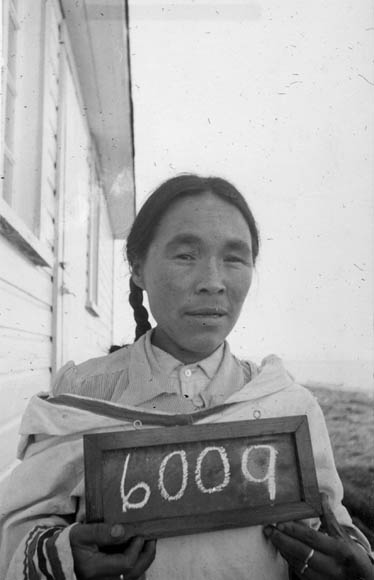This article contains historical language and content that some may consider offensive, such as language used to refer to racial, ethnic and cultural groups. Please see our historical language advisory for more information.
By Jennelle Doyle
When searching an archive, all too often we find things in places where we would not ordinarily expect. The life journeys of explorers, researchers, anthropologists and other individuals who have donated material to an archive are integral to identifying the scope of a given collection. Frederick W. Waugh was an ethnologist who worked for a time with the Anthropology Division of the Geological Survey of Canada. His visit to the Inuit community of Nain in Nunatsiavut, the region of Inuit Nunangat situated in northern Labrador, in 1921–22 is reflected in a photo album his son R.F. Waugh donated to Library and Archives Canada (LAC).
Frederick Waugh had set out for Labrador in 1921, noting in his journal his intent to photograph and study Montagnais people (now Innu Nation [Naskapi–Montagnais]). However, Waugh ended up at Nain and primarily photographed and documented Inuit who lived in that area. His photographs, in an album at LAC, provide a glimpse into the everyday life of Nainimiut: dogsledding, gathering driftwood, skinning seals, ice fishing and more.

Three Inuit men feeding sled dogs (e011369232-025)
The album captures an interesting time in the community. In Nunatsiavut, Moravian ties are strong and many Nunatsiavummiut (Inuit of Nunatsiavut) still follow Moravian practices. German-speaking Moravian missionaries from Europe began settling in Labrador in the late 1700s. They established eight missions along the coast, one of which was Nain in 1771. In 1921, the Moravian church in Nain burned down. Waugh’s photographs captured the early efforts to rebuild the church using debris from the original structure (pictured here). The Memorial University Archives has images of the Moravian church before the fire, as well as other photographs of Nain in this period.

Ruins of Nain’s Moravian Mission, which burned in the fall of 1921, Nunatsiavut. Photo Credit: Waugh (e011369232-018)
The Canadian Museum of History houses copies of similar photographs, as well as Waugh’s journals. His journals from this period were titled “Labrador Eskimo Notes.” These journals provide a detailed account of various medicines, games, hunting practices, food knowledge and customs. As noted in his journals from Labrador, one of his most frequent sources was Amos Voisey.

Four boys in parkas and black-bottom kamek (sealskin boots) (e011369232-009)
Archives can sometimes be tangled webs that are difficult to navigate. I hope that by highlighting this album, it will help connect some of the dots for others who are interested in content relating to Nain, or Fredrik W. Waugh himself. Some of the names of those pictured in the photos may be inaccurate. We encourage you to reach out if you have any additional information that could help us create a more accurate record.
All in all, these beautiful photographs speak for themselves.
If you are interested in Nain, Nunatsiavut and the Nunatsiavummiut, visit Heather Campbell’s blog about Judith Pauline White.
This blog is part of a series related to the Indigenous Documentary Heritage Initiatives. Learn how Library and Archives Canada (LAC) increases access to First Nations, Inuit and Métis Nation collections and supports communities in the preservation of Indigenous language recordings.
Jennelle Doyle is an archivist with the Listen, Hear Our Voices initiative at Library and Archives Canada. Jennelle grew up in Churchill Falls, Labrador, her family being from both the south coast of Labrador and the island of Newfoundland. She has been located in Ottawa since 2019 and is currently a master’s student at the University of Ottawa while continuing her work on the initiative.

![On the left of the graphic, Tatânga Mânî [Chief Walking Buffalo] [George McLean] in traditional regalia on horse. In the middle, Iggi and girl engaging in a “kunik”, a traditional greeting in Inuit culture. On the right, Maxime Marion, a Métis guide stands holding a rifle. In the background, there is a map of Upper and Lower Canada, and text from the Red River Settlement collection.](https://thediscoverblog.files.wordpress.com/2019/02/blog-banner-1.jpg?w=584)




![On the left of the graphic, Tatânga Mânî [Chief Walking Buffalo] [George McLean] in traditional regalia on horse. In the middle, Iggi and girl engaging in a “kunik”, a traditional greeting in Inuit culture. On the right, Maxime Marion, a Métis guide stands holding a rifle. In the background, there is a map of Upper and Lower Canada, and text from the Red River Settlement collection.](https://thediscoverblog.files.wordpress.com/2019/02/blog-banner.jpg?w=584)






























